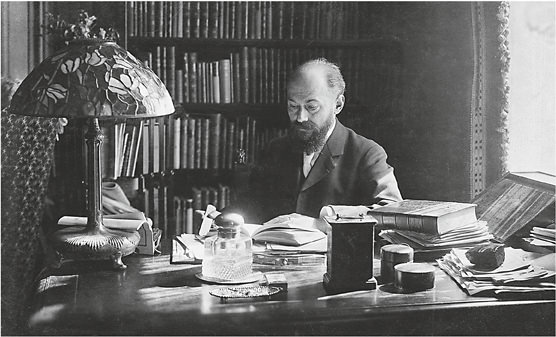Author Bruce Lerro, Socialist Planning Beyond Capitalism
Orientation
In his time, the late 19th to mid-20th century, Pierre Janet was considered a great psychologist and rival to Freud. But in Yankeedom he is barely known today. I bring him up in this article, not only because his ideas are worthy of being known, but because in many ways his was a precursor to the work of the communist psychology built by Lev Vygotsky, Alexander Leontiev, and Alexander Luria. In the early part of this article, Janet's ideas are favorably compared to Freud in the importance of conflict; the origin of neurosis; the ways in which patients are trapped; how centralized the personality is; therapeutic techniques; the place of transference; the ideal patient; and adherence to the scientific method. In the middle section of the article Janet's theory of three levels of personality are discussed.
Psychologists have spent many years dissecting different spectrum of the mind. These include all aspects from sensations to perceptions to thinking, to analyzing, comparing and contrasting, evaluating, deciding and planning. But what about what people do? After all, psychology is not just what is in the mind or heart. Psychology also studies gestures, postures and movement. Part of this article distinguishes reflexes from behavior, actions, habits, conduct and practical-critical activity. In the last third of the article, these different forms of doing are compared. I close with the similarities and differences between Janet and Vygotsky and socio-historical psychology. As resources for this article, I used Henri Ellenberger's large tome, The Discovery of the Unconscious: The History and Evolution of Dynamic Psychiatry, which has a long chapter on Janet. The second resource is Jaan Valsiner's and Rene van der Veer's book The Social Mind. Valsiner is also the author of a large biography of Vygotsky. Lastly I shall reference B.R. Hergenhahn's book An Introduction to the History of Psychology, which I used for many years while teaching the subject.
Family background
Pierre Janet was a medical doctor born in 1859 who died in 1947. His early years of psychological work overlapped with the great hypnosis period of Jean-Martin Charcot and the The Nancy school. Janet was a consummate Parisian. He was born and died in Paris. He came from an upper middle-class family who produced many scholars, lawyers and engineers. His father became a bookseller, specializing in music, while his mother was very religious. Pierre was the oldest son of a young mother who was 21 at time of his birth, while his father was 45. His parents were very distant and the only relative who showed interest in Pierre was his uncle, Paul. Paul wrote books on philosophy, which were classics in France for two or three generations. He also wrote many studies on the history of philosophy. Paul's son wrote studies on philosophy of science and on the psychology of scientific discoveries. Pierre's mother died in 1885 well before Janet became famous. He wanted to do psychopathological research and decided to take up medical studies. Janet began his medical studies in 1889 and completed them in 1893. He worked in Charcot's wards. Charcot died in 1893. In 1894 Janet published a book on philosophy he had been working on for 12 years. He was married in 1894. Janet wrote two books on neurosis: Character and Neurosis: An Integrative View and Obsessions and Psychasthenia.
Intellectual influences
Janet was deep into French intellectual life, and he crossed paths with Maurice Blondel, the sociologist Emile Durkheim; the socialist Jean Jaures, and the psychologist Alfred Binet. Janet was very intellectually ambitious. In his Latin dissertation, Janet chose Francis Bacon and the alchemists as topics and thought he was in a similar situation as Bacon. He wanted to found a new experimental psychology based on synthesizing science and magic. He became life-long friends with process philosopher Henri Bergson who was very interested in memory for his arguments about creative evolution. Late in his book Matter and Memory, Bergson refers to Janet's research on dissociation of personality, hypnosis and suggestion. They shared an interest in Charcot's work. Janet also studied the work of Proust and Valery on memory. Over the years, he built a vast and comprehensive system in which almost every possible aspect of psychology found its place. He kept a card catalogue of his books. Late in life he became friends with the author James Baldwin. Further In his quest to understand the unconscious mind, Janet became interested in graphology and narcoanalysis as a way to link hypnosis to chemical substances. Lastly, he explored electric shock therapy for curing depression. He kept an extensive herb garden in which he collected and classified herbs. He enjoyed hiking and botanizing in the Fontainebleau woods.
He was not only a scholar but a very skillful clinician and psychotherapist, and an admirable lecturer. As a teacher he tried to follow the Socratic Method. He believed there would come a time when a man could travel through the past in the same way as he now travels through air. He would have nothing to do with journalists and granted no interviews.
Freud vs Janet: Similarities and Differences
Both Freud and Janet were medical doctors and they were interested in the same kinds of neurotics, namely obsessives and hysterics. Both were interested in the importance of traumatic events in the shaping of personality and they both valued working with hypnosis to get to the trauma. Both were interested in patients who were "stuck" (fixation) and they both thought fixation kept people from living in the present. They both also believed that fixation haunted the patient's future. For Janet, fixed ideas narrowed consciousness in the present, which kept the person from completely functioning in the here-and-now at work. They both dismissed parapsychology and religion. Janet thought that therapy would eventually replace religion.
However, they differed in important ways. First, here is a summary of Janet's psychological analysis.
- The discovery of subconscious fixed ideas is caused by traumatic or frightening event that have been replaced by symptoms. This narrows the field of consciousness.
- Hysterical crisis are disguised reenactments of fixed idea.
- Fixed ideas are subconscious characteristic, a feature of hysteria vs obsessive neurosis, and were unconscious.
- Obsessions and phobias were conscious.
For Freud neurosis came about because of repressed sexuality, and as the patient being arrested at the phallic stage of development in either the Oedipus or Electra complex. Janet thought Freud's ideas about sexuality were "over the top". Janet thought the foundation for neurosis was the inability to do creative work in a consistent, expanding manner, which he called "conduct". There were two types of neurosis:
- Asthenias syndrome - insufficiency of psychological force; and
- Hypotonic syndrome - insufficiency of psychological tension.
These will be discussed later.
(Note: You can view every article as one long page if you sign up as an Advocate Member, or higher).






